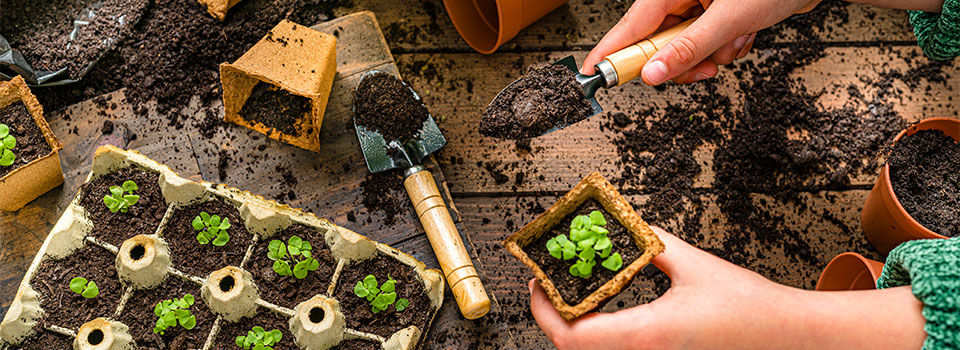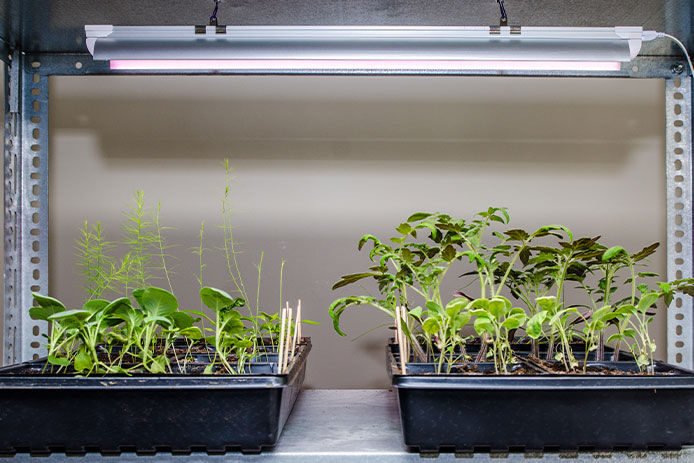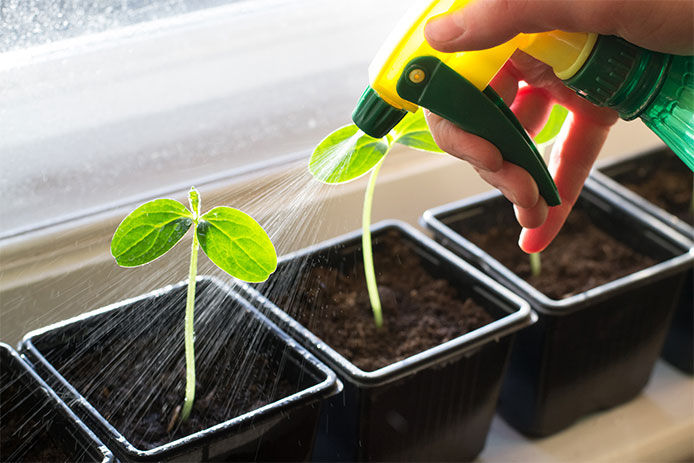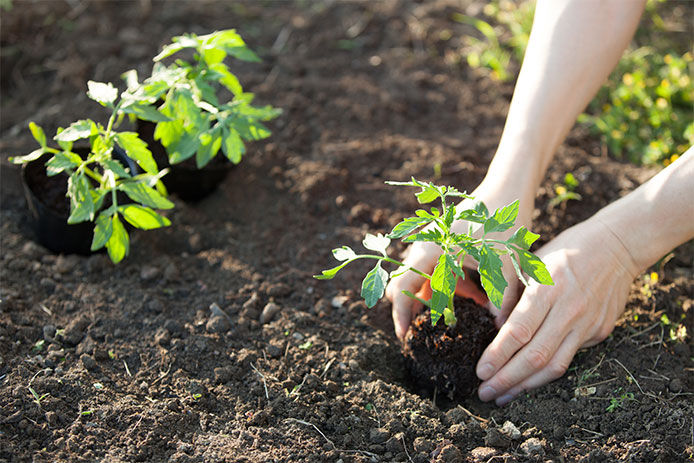While do-it-yourself projects can be fun and fulfilling, there is always a potential for personal injury or property damage. We strongly suggest that any project beyond your abilities be left to licensed professionals such as electricians, plumbers, and carpenters. Any action you take upon the information on this website is strictly at your own risk, and we assume no responsibility or liability for the contents of this article.
How to Start Seedlings Indoors

Have you wanted to begin growing plants indoors but don’t know where to start? Starting plants from seeds indoors isn’t difficult or complicated once you understand how the process works. You'll need to start with the right growing medium, some containers, enough light, warmth, and all the attention they need. One note before you go out to buy your seeds: if this is the first time you've tried starting seeds indoors, don't buy too many. We suggest starting with a dozen or so packets in about four or five varieties until you get the hang of it.
1. Start with the Right Medium

To grow seeds, you need a sterile medium, seed-starting, light, and fluffy. It needs to hold enough moisture to start propagation but not enough to drown the seeds. You can use either compressed pellets of peat or coconut husk fibers or use seed starting mix, which comes in bags. A seed already contains everything a seedling will need to grow, so you won’t need fertilizer at this point.
2. Choose Your Container

A variety of containers, typically three to four inches across, can be used to hold the medium you're growing your seeds in. Cell-packs or pots that you bought last year's flowers in will do the job nicely, but whatever you use needs to be sterilized. You can make a solution of nine parts water to one part of bleach and wash your container, then rinse thoroughly.
Make sure that the containers have holes for drainage in the bottom so any excess water can drain. You will want to get a shallow, waterproof tray to set them in. Be sure you’re pots are no larger than three to four inches since they’ll be transplanted into the garden (or a larger container if you’re container gardening).
You can also buy pots that will decompose in the soil. The pot and all are planted in the soil, so the tiny plant's roots aren't disturbed. There are also seed starting trays that have a set of attached containers, a tray to set them on for drainage, and a transparent lid to keep up the humidity in the seeds’ early stages.
3. Add a Light and Heat Source

If there isn't sufficient light, your plants will be spindly, sickly, and stocky. As LawnStarter says, “the key to having a successful indoor garden is to put it within sight of a window so that it receives between four to six hours of sunlight everyday.”
One way or another, you’ll need a sunlight source for sufficient lighting. This can be artificial if you don’t have window lighting readily available. You can even buy grow lights made for growing plants, but fluorescent shop lights with one cool bulb and one warm bulb will work as well.
If you do use fluorescent lighting, you'll need to hang them from chains. The purpose of the chains are so that you can raise the lights as your seedlings grow. You want to keep the lights about two to three inches above the seedlings. Once the seedlings break the surface, you'll need to keep the lights on for between 12 to 16 hours a day. The easiest way to keep track of this is to set an indoor timer.
For your seeds to germinate, they need to be kept between 65-75 degrees Fahrenheit. You can purchase a seed starting mat to put under your seeds to keep them warm. However, if you have your lighting set up correctly, it should produce enough heat to do the job.
4. Water Accordingly

A seedling is very delicate and watering it correctly is probably the most challenging part of raising plants from seed. You want to keep the medium damp, but not fully wet.
Some helpful watering tips include:
- Keep your seedlings covered with plastic until you see seeds are poking through the soil
- Water your seedlings from the bottom by putting the water in the seed tray, allowing the plants to soak up the water through the holes in the bottom of their pots
- Check your little seedlings at least once a day to see how they’re doing
5. Move Your Plants Outdoors

When your seedlings have reached the transplant stage, you’ll need to gradually expose them to the environment. This is done by gradually placing your seedlings outside every day for extended periods of time. This will go on for six to ten days depending on the temperatures and how fragile your seedlings are. Once the plants have reached planting size, then transplant them to your garden or another container.
There is some work involved in raising your plants, but the payoff is taking a bite out of a big, juicy tomato that you’ve raised from a tiny seed!
Article Author
Sarah Miller
Sarah Miller is a writer, avid yogi, and outdoor explorer. She spends most of her time practicing meditation and wellness using organic elements within nature.